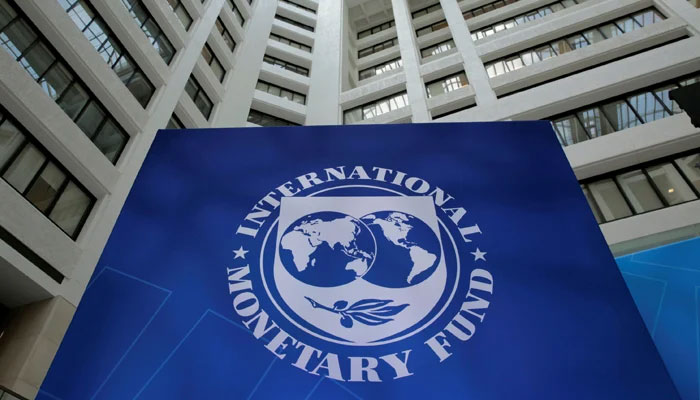IMF also cuts Pakistan’s GDP forecast to below 1pc
IMF forecast inflation, measured by CPI, would be recorded around 27.1% in FY23 and fall to 21.9% in FY24
ISLAMABAD: The International Monetary Fund (IMF) has revised downward the GDP growth projection from 2 percent to 0.5 percent for the current financial year. The CPI-based inflation has been projected upward at 27.1 percent on average for the current fiscal year 2022-23.
According to the World Economic Outlook released by the IMF on Tuesday, Pakistan’s GDP growth would be slashed from 6 percent in the last fiscal year 2021-22 to 0.5 percent of GDP for the current fiscal year. The Fund also projected the real GDP growth rate would rebound when it would touch 3.5 percent of GDP in the next financial year 2023-24.
The government had envisaged a GDP growth rate of 5 percent for the current fiscal year on the eve of the budget 2022-23. But, in the aftermath of the devastating floods, the GDP growth rate was revised downward to 2 percent.
After the nine-month (July-March) period of the current fiscal year, the IMF has projected a downward revision of the GDP growth rate to 0.5 percent for the current fiscal year. The World Bank and Asian Development Bank also revised downward the growth rate to 0.6 percent and 0.4 percent respectively in their latest reports.
On average inflation, the WEO for 2023 shows Pakistan’s average inflation would be standing at 27.1 percent for the current fiscal year, much higher than initial official projections of around 11 percent for the current fiscal year. The CPI-based inflation will start receding in the next fiscal year, but it will remain elevated at 21.9 percent for the financial year 2023-24.
On the projection of the Current Account Deficit, the IMF has projected it will stand at negative at 2.3 percent of GDP for the current fiscal year against 4.6 percent of GDP for the last financial year.
The Current Account Deficit (CAD) has been projected at negative 2.4 percent of GDP for the next financial year. Interestingly, the CAD was slashed down massively, but the IMF was still projecting it on higher side for ongoing and for the next financial year.
The WEO report states the baseline forecast for growth to fall from 3.4 percent in 2022 to 2.8 percent in 2023, before settling at 3.0 percent in 2024.
Advanced economies are expected to see an especially pronounced growth slowdown, from 2.7 percent in 2022 to 1.3 percent in 2023.
In a plausible alternative scenario with further financial sector stress, global growth declines to about 2.5 percent in 2023 with advanced economy growth falling below 1 percent.
Global headline inflation in the baseline is set to fall from 8.7 percent in 2022 to 7.0 percent in 2023 on the back of lower commodity prices, but underlying (core) inflation is likely to decline more slowly. Inflation’s return to target is unlikely before 2025 in most cases.
-
 Blake Lively Gushes Over Ryan Reynolds Amid Feud With BFF Taylor Swift
Blake Lively Gushes Over Ryan Reynolds Amid Feud With BFF Taylor Swift -
 Prince William 'furious' At Meghan Markle, Harry
Prince William 'furious' At Meghan Markle, Harry -
 Church Under Investigation After Anti-ICE Protest Interrupts Worship
Church Under Investigation After Anti-ICE Protest Interrupts Worship -
 UK Govt Tightens School Rules On Phones And Social Media
UK Govt Tightens School Rules On Phones And Social Media -
 Fernando Mendoza’s Mom Steals Hearts After Indiana Wins National Championship
Fernando Mendoza’s Mom Steals Hearts After Indiana Wins National Championship -
 'I Don't Care': Trump Shrugs Off Nobel Prize Talk As Greenland Tensions Escalate
'I Don't Care': Trump Shrugs Off Nobel Prize Talk As Greenland Tensions Escalate -
 King Charles Risks Facing Backlash As His Punishment Not Enough For Andrew
King Charles Risks Facing Backlash As His Punishment Not Enough For Andrew -
 Canucks Losing Streak Reaches 11 Games After Islanders Defeat
Canucks Losing Streak Reaches 11 Games After Islanders Defeat -
 'Industry' Creators Reveal Most Common Message They Get From Fans In Finance
'Industry' Creators Reveal Most Common Message They Get From Fans In Finance -
 Alarming: Rising Shark Attacks Force Australia To Close Beaches
Alarming: Rising Shark Attacks Force Australia To Close Beaches -
 Lily Allen Takes Side In Brooklyn, Nicola's Feud With David, Victoria Beckham
Lily Allen Takes Side In Brooklyn, Nicola's Feud With David, Victoria Beckham -
 Northern Lights Glow Across US, UK , Europe After ‘rare’ Solar Storm Hits
Northern Lights Glow Across US, UK , Europe After ‘rare’ Solar Storm Hits -
 Karol G Parts Ways With Beau Feid After Three Years Of Dating
Karol G Parts Ways With Beau Feid After Three Years Of Dating -
 'DWTS' Pro Gleb Savchenko's Mystery Love Interest's Identity Revealed
'DWTS' Pro Gleb Savchenko's Mystery Love Interest's Identity Revealed -
 Meghan Markle’s Father ‘plans To Leak’ Her Letter Despite Privacy Efforts?
Meghan Markle’s Father ‘plans To Leak’ Her Letter Despite Privacy Efforts? -
 Woody Harrelson Reveals Creative Clash With Matthew McConaughey On 'True Detective'
Woody Harrelson Reveals Creative Clash With Matthew McConaughey On 'True Detective'




